PHOTOS
took 147 pictures during the war; here are some of the best ones. There are no pictures of combat; I was busy doing something else at that time. But there are pictures that show the effects of the battles, and there are pictures that show what the daily life of the GIs was like.

I never saw another camera in all of my time in France. I took many pictures of my superior officers, but no one ever stopped me, or even questioned what I was doing. It never interfered with my duties.
1st Lt. Bryan Bell at Normandy in 1944;
a rifle platoon leader in G company of the 313th infantry of the 79th division.At the time this picture was taken, we had landed on the beach, and were involved in fighting to secure Normandy, and ultimately make a breakthrough in our broader campaign in France.
As we gradually drove the Germans back, they left destruction and litter behind them. There were many scenes like this. Normandy was famous for its cattle. They Germans shot them as they left. We saw the bloated bodies lying in the fields. 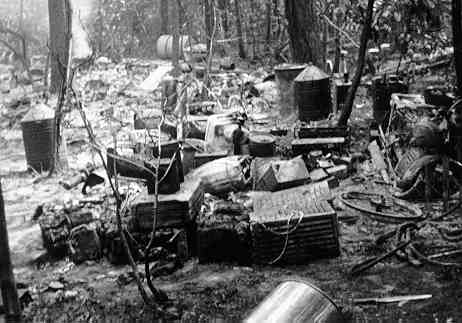
Here is a captured German Prisoner of War, or at least one in German uniform. Many of the men we fought were conscripts from Poland, Russia, and other Eastern countries that the Nazis had captured. I saw some Mongolian-looking people, and wondered momentarily if the Japanese had joined the Germans in Normandy. 
A half track was half truck and half tank. It could go over difficult terrain like a tank, but it had many features of a truck. It could carry a larger number of infantrymen than a tank. It was armed with a .50-caliber machine gun, but it did not have the protective armor of a tank.
The Germans abandoned their truck, leaving a helmet, rifle and radio but they did drink the bottle of wine.
Our battlefield surgeon treating a wounded German soldier. That was common for us; and in many cases, the German medics also treated our wounded.
This artillery officer surveyed the area in front looking for evidence of the enemy, and picked a target. Then he got the coordinates from a map. We were well-supplied with aerial photos during the war.
He used these binoculars in his search.
This artillery sergeant telephoned the coordinates of a target to the artillery battalion in the rear. Then the firing would begin.
This is the terrain the officer saw. The enemy frequently took up defensive positions on the edge of woods.
This is what the position looked like from the enemy's viewpoint. It was so well camouflaged it could not be detected, even up close. Camouflage was very important in war.
A German sniper used this ladder to get up in the tree and shoot at us.One of only two times in my 136 days with G company when we could break away from combat for church services. The minister was from someplace in the Midwest. I can't say much for his sermon, it was just what he would have given on a Summer day back home, and he was talking to men who were facing possible death daily. He could have given a more powerful message. 
One Sunday I attended a French church in Ramecourt, where the sermon was given by a Catholic priest who came from Alsas Lorraine. He spoke with such a German accent to his French that I could not understand him. The mayor of Ramecourt said that he couldn't understand him either!
Lt. Bell getting a haircut.
There was always a man in every company who could give at least a reasonable haircut. You can see the barber smiling as he operates his hand clippers. This is what we did between military engagements.A pause in combat occasionally allowed us to shave and bathe out of a helmet full of cold water. I only had one tub bath in 136 days with G Company. It was during a peaceful interlude after we had captured Luneville. At a public bath, there were a series of cubicles. A woman assigned each of us our particular bathtub and received a modest fee. I took a number of baths out of my helmet, but when it turned cold and we were sleeping in the snow, that was not possible. It was at that time that I went for 6 weeks without a bath! I was dressed in longjohns, long woolen underwear, a woolen uniform, my fatigues, and a field jacket over that. Keeping warm and just surviving were our priorities, and a bath was far down on the list. 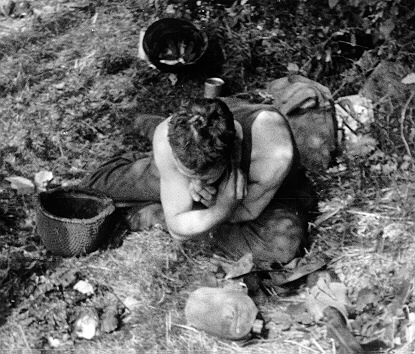
Here's what we wore: The outer garment was called 'Fatigues'. Civilians called them 'Coveralls'. They were worn over our khaki or woolen uniform, depending on the time of year. You can see my bayonet, my first-aid kit, and my camera case attached to my ammunition belt. With my fatigues and my uniform underneath, I had 14 pockets. The pockets of the fatigues were over the thighs, rather than in the usual position, to make it impossible for us to put our hands in our pockets. We were required to keep our hands ready at all times.
1st Lt. Bryan Bell
I had a special pocket in which I kept my captured stainless-steel German spoon. Ours were made of tin. After each meal, I would lick it clean and stick it in my pocket. People have asked me "Why didn't you wash it?" Wash it??? Where was the water? Where was the soap? I certainly wasn't going to take precious water from my canteen to wash a spoon. So I just stuck it back in my pocket, and I survived for months just licking the spoon clean and nothing ever happened to me.
When we were living so 'close to the ground', ordinary factors of life became very important to us, like meals, or more importantly, where we were going to sleep, and it is strange that a captured German stainless-steel spoon should be considered such an important possession.
This nice French woman washed my fatigues.
It was one of the rare occasions when I had the luxury of clean fatigues.Our battalion was the first one in Cherbourg. It was an important victory for us because Cherbourg was a major port and its capture helped secure Normandy. This top hat was captured in Cherbourg and carried throughout the campaign as a kind of mascot. For amusement it was brought out every once in a while.
We were frequently so tired that every time we stopped anywhere, we could simply drop on the spot and go to sleep. This is a very revealing picture of fatigue. These exhausted men are sleeping on cobblestones in a street. There was a way they could cock their helmets to make a sort of pillow, and that is what the first man in this picture has done. 
Free French resistance soldiers.We were joined by a number of French patriots who wanted to help us fight the Germans. They were especially helpful to us in gathering information but they were not well-trained as soldiers and their equipment was rather antiquated. But they were highly motivated and we were glad to have them on our side.
The best part of our war experience was liberating towns when there was no enemy resistance. The French were thrilled to be rid of 4 years of Nazi domination.I don't remember the names of these towns -- it was just one after another; We didn't take notes about which town was which.
I distinctly remember this little old man who had tears running down his cheeks -- tears of joy that his town had been liberated.
A Frenchman offering wine to liberating soldiers.The convoy moved through the town. In Belgium, we were trying to pursue the Germans, but the celebrating crowds in the streets were so thick, we were delayed 2 hours!
French buglers stood out in the street, bugling a welcome to the victorious GIs.In some towns we were not received as welcomly as in the one shown above, because the towns were completely destroyed and the citizens had left. These towns were strongholds for the Germans and had been bombed from the air. The infantry was not equipped to effect such damage. It was a tragic scene; all the result of a madman's desire to conquer the world. We all suffered.
A civilization was at stake. There is a time when you must put your life on the line. If Hitler had conquered England, there is no doubt that he would have marshaled all the resources of Europe and England, and joined with the Japanese to attack the United States. There is no doubt that he would have prevailed. I gave up a cushy job as an administrative officer in the Air Force to volunteer to be a 1st lieutenant in G company, and I'm glad I did. I'm proud of that company, its leadership, and the men with whom I bonded so well under such trying circumstances. Real brothers in combat.
A pathetic message written on the remaining door which stood even though the house was largely demolished.
It read, "We have evacuated to the city. I will be at the house of Mademoiselle Morel."
CONCLUSION
I have been blessed greatly in my life, and I have felt that if the Lord saved me, I had a special commission to make my life worthwhile, which I have tried to do. If you saw "Saving Private Ryan", that's what Pvt. Ryan was charged with by Capt. Miller, as Capt. Miller was dying and Pvt. Ryan was to go back to safety at home.
I have been blessed greatly with a wonderful wife, wonderful children, a country that has given me marvelous opportunities, and I am so glad I survived to enjoy them.
I hope you got something from this website and enjoyed it!
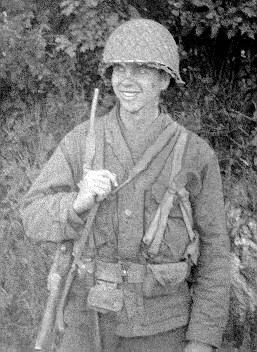


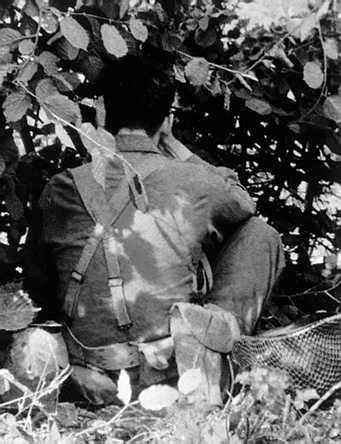
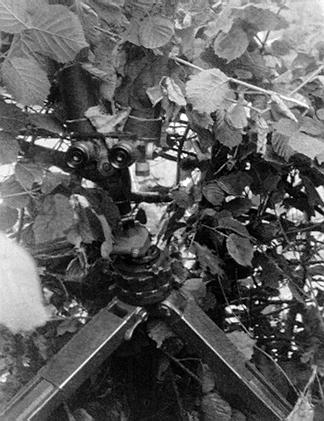
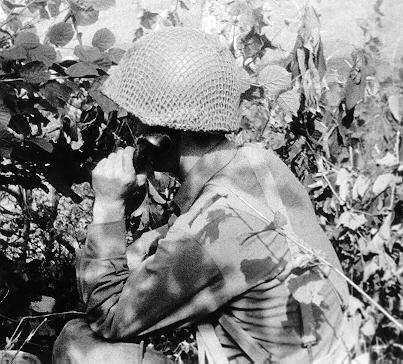

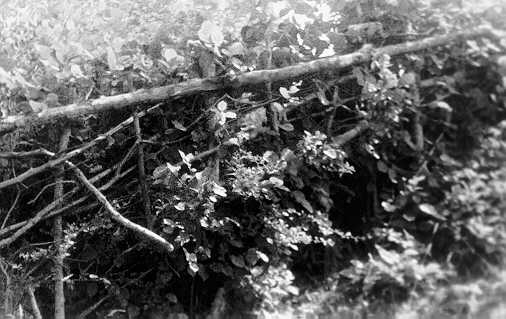

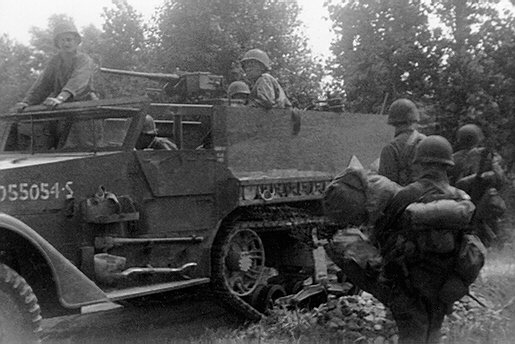
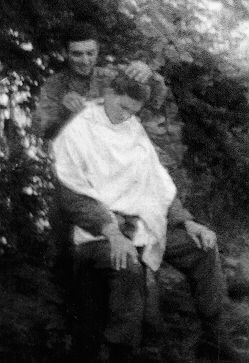



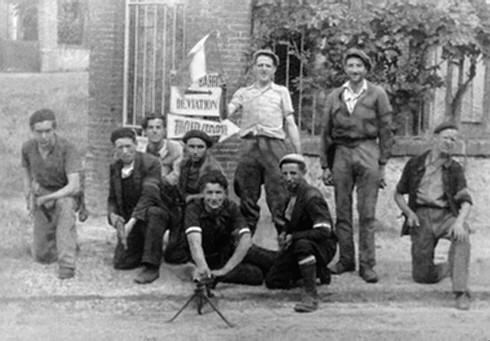

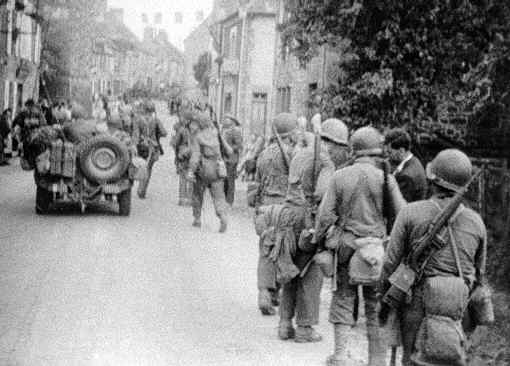
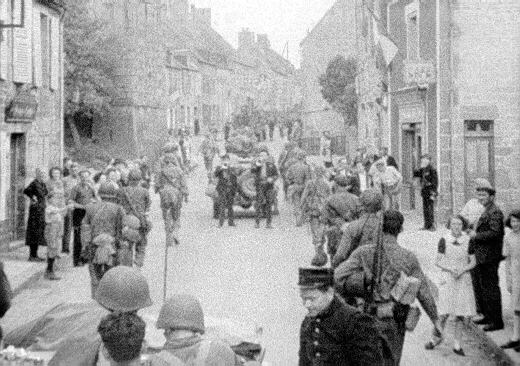
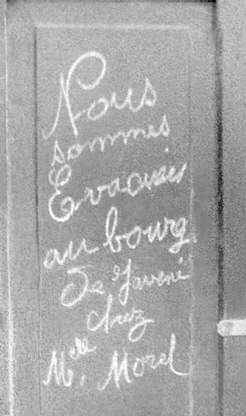
 Chapter 7
Chapter 7
